Hereditary ATTR amyloidosis with polyneuropathy is under-recognized, debilitating, and progressive, so a timely diagnosis is critical1-4
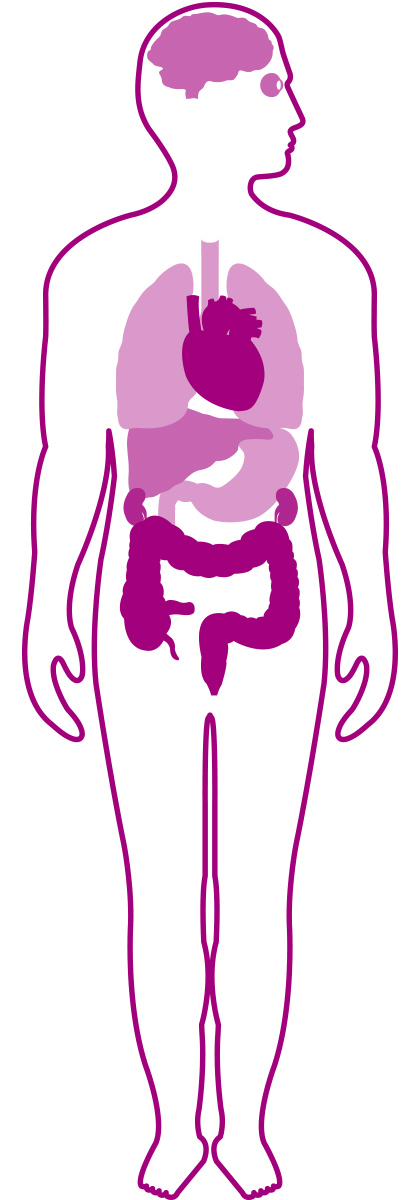
POLYNEUROPATHY MANIFESTATIONS
Hereditary ATTR amyloidosis with polyneuropathy can manifest in a variety of ways that impact quality of life4,a
Peripheral sensorimotor neuropathy3
- Numbness, tingling, swelling, burning, and other abnormal feelings in hands and feet
- Neuropathic pain
- Walking disability
- Loss of balance
Autonomic neuropathy2
- Orthostatic hypotension
- Diarrhea and constipation that may alternate
- Early satiety
- Urinary retention associated with incontinence3
- Erectile dysfunction
- Sweating abnormalities
aNot all patients will experience all of these symptoms, and some patients will experience other symptoms not listed. TEGSEDI® does not treat all symptoms of hereditary ATTR amyloidosis.
Patients may present with a range of signs and symptoms including polyneuropathy, cardiomyopathy, bilateral carpal tunnel syndrome, lumbar spinal stenosis, nephropathy, gastrointestinal disturbances, and ocular manifestations, among others. Patients with hereditary ATTR amyloidosis may present with a mixed phenotype, including both polyneuropathy and cardiomyopathy.2,3,5*
*TEGSEDI is not approved for and has not been shown to be safe and effective for the treatment of cardiomyopathy in patients with hereditary ATTR amyloidosis. The NEURO-TTR study was not designed to assess the impact of TEGSEDI on cardiomyopathy symptoms.
Abbreviations: ATTR, transthyretin-mediated amyloidosis; hATTR-PN, hereditary transthyretin-mediated amyloidosis with polyneuropathy.
Due to the systemic nature of hereditary ATTR amyloidosis, it is imperative to perform a complete workup of diagnosed patients for all potential manifestations2

Phenotyping
Patients with hereditary ATTR amyloidosis can present with a range of predominant neurologic or cardiac features6-8
There is substantial overlap in the clinical features of hereditary ATTR amyloidosis, and many patients have a mixed phenotype.6-8
Hereditary ATTR amyloidosis phenotype overlap6-8

Note that the genotype nomenclature reflects the protein variant including the 20-aa peptide.9
The systemic nature of hereditary ATTR amyloidosis creates a critical need to perform a neurologic assessment in patients you suspect might have cardiac amyloidosis2

Disease progression
Hereditary ATTR amyloidosis with polyneuropathy can progress rapidly if left undiagnosed or untreated1,4
The natural history of hereditary ATTR amyloidosis generally leads to increasing difficulty with mobility and daily tasks (eg, turning a key in a lock or fastening buttons)10
Progression of familial amyloid polyneuropathy (FAP)10
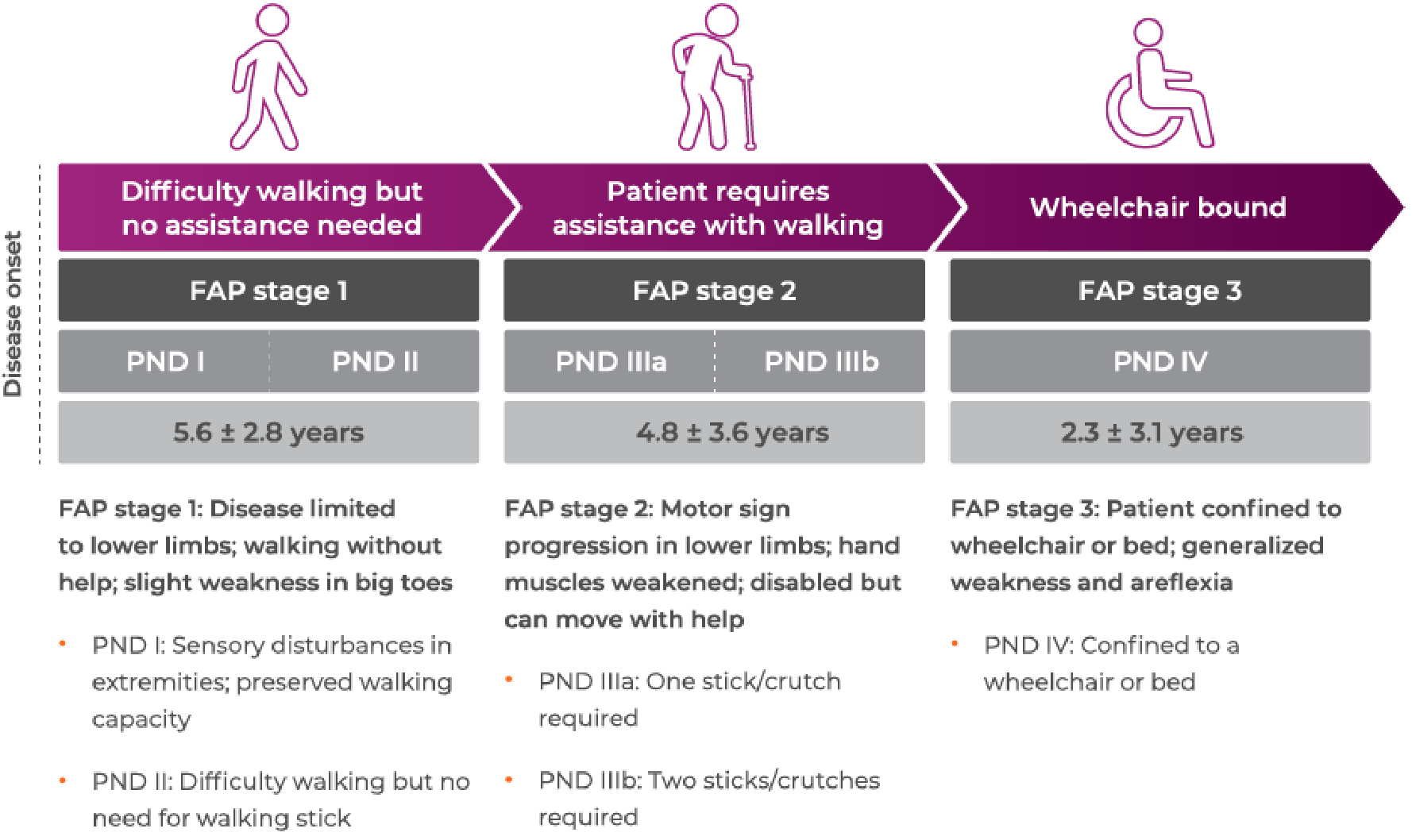
Abbreviation: PND, polyneuropathy disability.
- The natural history of hereditary ATTR amyloidosis generally leads to increasing difficulty with mobility and daily tasks (eg, turning a key in a lock or fastening buttons)11
- The hereditary nature of the disease is particularly challenging for families who have observed the progressive decline of family members.1,4
Mechanism of disease
Hereditary ATTR amyloidosis with polyneuropathy is characterized by the deposition of amyloid fibrils throughout the body, including the nerves2
-
Liver
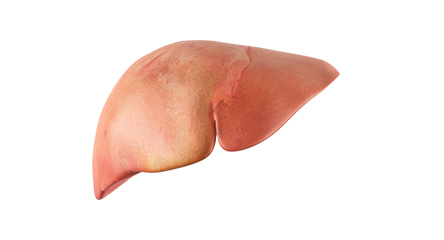
The TTR protein is primarily synthesized by the liver.1,11
-
TTR tetramer
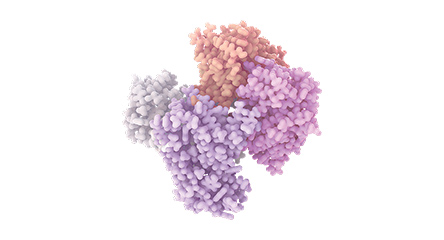
TTR proteins are primarily excreted from the liver as tetramers.1,11
-
TTR monomer
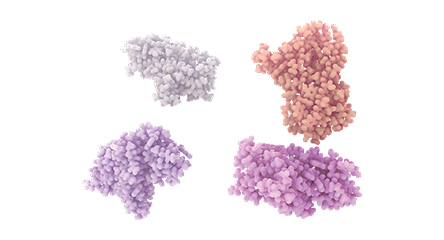
Tetramers dissociate into monomers due to TTR gene mutations.1,11
-
Misfolded TTR proteins
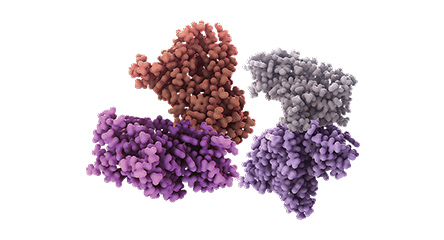
Monomers can misfold and aggregate into fibrils.1,11
-
Amyloid fibrils

Amyloid fibrils can deposit in various organs and cause systemic dysfunction.1,11
The aggregation of amyloid in organs and tissues, including nerves, causes the symptoms of hereditary ATTR amyloidosis.1,11
Abbreviation: TTR, transthyretin.
Hereditary ATTR amyloidosis with polyneuropathy has significant morbidity and can have debilitating physical symptoms that significantly impact patients’ quality of life and independence2


Image is not of actual patients
My neuropathy was so bad that I felt like I couldn’t carry my grandchildren. I was afraid I might drop them. It felt like my quality of life was falling apart…As that went on, it began to affect my family’s lives as well.
Quote taken from actual patient taking TEGSEDI


Image is not of actual patients
I have come to believe that perhaps my cardiac issues may have sort of masked other issues that were probably brewing behind the scenes…because I began to develop polyneuropathy and GI issues.
Quote taken from actual patient taking TEGSEDI
Suspect and diagnose
Look for red-flag symptoms in patients with peripheral sensorimotor neuropathy2
Suspect and diagnose hereditary ATTR amyloidosis with polyneuropathy early by looking for clusters of the following findings2:
Family history of hereditary ATTR amyloidosis
Bilateral carpal tunnel syndrome
Vitreous opacities
Renal abnormalities
Cardiovascular manifestations
- Chronic heart failure7
- Ventricular wall thickening with preserved ejection fraction
- Conduction disturbances7
- Syncope7
GI symptoms that may be uncontrollableb
- Diarrhea
- Constipation
- Alternating diarrhea and constipation
- Unexplained weight loss
Autonomic conditions
- Orthostatic hypotension
- Urinary retention leading to recurrent urinary tract infections
- Sexual dysfunction
- Sweating abnormality
Additional alert signs and symptoms
- Rapid disease progression
- Failure to respond to prior therapies for another diagnosis
Abbreviation: GI, gastrointestinal.
bGI symptoms may result from autonomic neuropathy and/or amyloid deposition within the gastrointestinal tract.2,4
Look for clusters of symptoms in your patients with sensorimotor neuropathy to identify hereditary ATTR amyloidosis with polyneuropathy as early as possible2,12
Identify patients who may be appropriate for treatment with TEGSEDI
Manifestations of polyneuropathy
- Signs and symptoms can include sensory, motor, and autonomic neuropathy2
- FAP staging and PND scoring can assess patients’ neuropathic impairment at time of treatment initiation10
Genetic confirmation of hereditary ATTR amyloidosis
- Diagnosis can include assessment of clinical symptoms and evidence of amyloid deposition, and ultimately requires a genetic test2,3,13
- ICD-10-CM code for hereditary ATTR amyloidosis is E85.1
TEGSEDI is indicated for the treatment of the polyneuropathy of hereditary ATTR amyloidosis in adults.14
CONTRAINDICATIONS
TEGSEDI is contraindicated in patients with14
- Platelet count below 100 × 109/L
- History of acute glomerulonephritis caused by TEGSEDI
- History of a hypersensitivity reaction to TEGSEDI
Genetic testing with hATTR Compass can confirm a diagnosis of hereditary ATTR amyloidosis with polyneuropathy early to optimize management1,3,13

